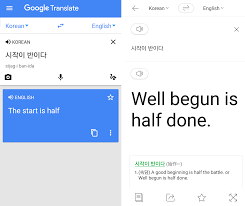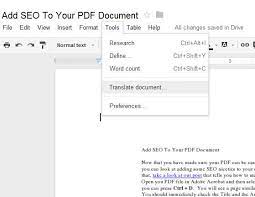Google Translate: Bridging the Gap between Ilocano and Tagalog
Language is a powerful tool that connects people, cultures, and ideas. However, language barriers can often hinder effective communication and understanding. Fortunately, technology has come to our aid in breaking down these barriers. One such technological marvel is Google Translate, a widely used online translation service that allows users to translate text from one language to another with just a few clicks.
For the speakers of Ilocano and Tagalog, two prominent languages spoken in the Philippines, Google Translate has become an invaluable resource. Ilocano is primarily spoken in the northern regions of the country, while Tagalog is the national language and widely spoken throughout the Philippines. The ability to translate between these two languages opens up new avenues for communication and collaboration.
Google Translate’s Ilocano to Tagalog translation feature provides users with a convenient way to bridge the gap between these two languages. Whether you need to understand a text message, a social media post, or even an entire document written in Ilocano, Google Translate can help you grasp its meaning by providing an accurate translation into Tagalog.
The accuracy of Google Translate’s translations has significantly improved over time due to advancements in machine learning and artificial intelligence. While it may not be perfect and might occasionally produce some inaccuracies or nuances lost in translation, it still serves as an excellent starting point for understanding content written in Ilocano for Tagalog speakers.
In addition to its translation capabilities, Google Translate also offers pronunciation assistance. This feature allows users to listen to the translated text being read aloud in both languages. It not only helps with comprehension but also aids in learning correct pronunciation and intonation.
Furthermore, Google Translate is accessible on multiple platforms – from desktop computers to smartphones – making it readily available for anyone seeking quick translations on-the-go. Its user-friendly interface ensures that even those unfamiliar with advanced technology can easily navigate through its features.
However, it is important to note that while Google Translate is a valuable tool, it should not replace the expertise of human translators. Complex texts, idiomatic expressions, and cultural nuances may still require the assistance of professional translators to ensure accurate and culturally appropriate translations.
In conclusion, Google Translate’s Ilocano to Tagalog translation feature has become an indispensable resource for individuals seeking to overcome language barriers between these two languages. It provides a convenient and accessible way to understand content written in Ilocano, enabling effective communication and fostering cultural exchange. While it may have its limitations, Google Translate continues to evolve and improve, making language more accessible and bringing people closer together in our increasingly interconnected world.
Frequently Asked Questions: Google Translate for Ilocano to Tagalog
- How do I use Google Translate to translate from Ilocano to Tagalog?
- Is Google Translate accurate when translating from Ilocano to Tagalog?
- What is the best way to learn Ilocano and Tagalog using Google Translate?
- Can I trust the translations provided by Google Translate for Ilocano to Tagalog?
- Does Google Translate have an audio feature for translating from Ilocano to Tagalog?
- Are there any tips or tricks for using Google Translate effectively when translating between Ilocano and Tagalog?
How do I use Google Translate to translate from Ilocano to Tagalog?
Using Google Translate to translate from Ilocano to Tagalog is a straightforward process. Here are the steps to follow:
- Open your web browser and go to translate.google.com or download the Google Translate mobile app from your app store.
- On the Google Translate homepage or app, you’ll see two boxes labeled “Text” on the left and “Translation” on the right.
- In the “Text” box on the left, select “Ilocano” as the source language. You can do this by clicking on the language dropdown menu and typing “Ilocano” or scrolling down until you find it.
- In the “Translation” box on the right, select “Tagalog” as the target language using the same method as above.
- Now, you can enter your Ilocano text that you want to translate into Tagalog in the “Text” box. You can type or paste it directly into the box.
- As you enter or paste your text, Google Translate will automatically detect and translate it into Tagalog in real-time in the “Translation” box on the right side of the screen.
- If you prefer to listen to how a translation sounds in Tagalog, you can click on the speaker icon next to the translated text in order to hear it pronounced aloud.
- If you have a longer text or a document that needs translation, you can click on the document icon below each text box and upload a file for translation instead of typing or pasting directly into the boxes.
- You can also switch between different input methods such as handwriting recognition, voice input, or even use your camera for instant visual translations by clicking on their respective icons above each text box.
- Once you are satisfied with your translation, you can copy and paste it into any desired application or share it directly from Google Translate if using a mobile device.
Remember that while Google Translate is a useful tool, it may not always provide perfect translations, especially for complex or nuanced texts. It’s always a good idea to double-check important translations with native speakers or professional translators for accuracy and cultural appropriateness.
Is Google Translate accurate when translating from Ilocano to Tagalog?
Google Translate has made significant advancements in its translation accuracy over the years, thanks to the implementation of machine learning and artificial intelligence. However, it is important to note that no machine translation system is perfect, and Google Translate may still have limitations when translating from Ilocano to Tagalog.
Since both Ilocano and Tagalog are complex languages with unique grammar rules, idiomatic expressions, and cultural nuances, there may be instances where Google Translate struggles to capture the precise meaning or context of a text. It is especially true for texts that contain regional dialects or specific cultural references.
Google Translate’s translations should be viewed as a helpful tool for getting a general understanding of the content written in Ilocano. It can provide a starting point for comprehension but may require additional human intervention or consultation with native speakers or professional translators to ensure accurate and culturally appropriate translations.
To achieve the best possible results when using Google Translate for Ilocano to Tagalog translations, it is advisable to keep sentences simple and concise. Avoid using complex sentence structures or idiomatic expressions that could potentially confuse the translation algorithm.
Ultimately, while Google Translate has improved its accuracy significantly over time, it is always recommended to consult with language experts or professional translators when dealing with important or sensitive content. They can provide the necessary expertise to ensure accurate and nuanced translations between Ilocano and Tagalog.
What is the best way to learn Ilocano and Tagalog using Google Translate?
While Google Translate can be a helpful tool in learning Ilocano and Tagalog, it should not be relied upon as the sole method of language learning. Here are some tips to effectively use Google Translate alongside other resources:
- Start with basic vocabulary: Begin by translating simple words and phrases from English to Ilocano or Tagalog using Google Translate. This will help you build a foundation of common vocabulary.
- Practice pronunciation: Utilize the audio feature in Google Translate to listen to the translated words and phrases. Pay attention to the pronunciation and try to mimic it as closely as possible.
- Contextual understanding: When translating sentences or phrases, try to understand the context in which they are used. This will help you grasp the meaning behind the words and improve your overall comprehension.
- Compare translations: Use multiple translation tools, including dictionaries and language learning websites, alongside Google Translate. Compare different translations for accuracy and gain a more comprehensive understanding of the language.
- Study grammar separately: While Google Translate can provide basic sentence structures, it is essential to study grammar rules independently through textbooks or online resources dedicated to Ilocano and Tagalog grammar.
- Engage with native speakers: Interact with native speakers of Ilocano or Tagalog through language exchange platforms, online communities, or local language groups. Practice conversing with them while using Google Translate as a reference when needed.
- Supplement with other learning resources: Combine your use of Google Translate with textbooks, language courses, podcasts, videos, and other interactive materials specifically designed for learning Ilocano and Tagalog.
- Practice regularly: Consistency is key when learning any language. Set aside dedicated time each day or week to practice using the languages you’re learning, whether it’s through conversations, reading materials, or writing exercises.
Remember that while Google Translate can provide instant translations, it may not always capture cultural nuances or accurately convey idiomatic expressions. Therefore, it’s crucial to seek additional resources and engage with native speakers to gain a deeper understanding of the languages.
Can I trust the translations provided by Google Translate for Ilocano to Tagalog?
While Google Translate has made significant advancements in its translation capabilities, it is important to approach its translations with caution and not solely rely on them for critical or sensitive content. While it can provide a general understanding of the text, it may not always capture the nuanced meanings, idiomatic expressions, or cultural context accurately.
Google Translate uses machine learning and artificial intelligence algorithms to generate translations based on patterns and data from various sources. It does not have the same level of linguistic expertise and cultural understanding as human translators. As a result, there may be instances where the translations provided by Google Translate are not entirely accurate or do not fully capture the intended meaning.
To ensure accuracy and precision in translations, especially for important documents or professional purposes, it is recommended to consult with human translators who possess expertise in both Ilocano and Tagalog. They can provide a more nuanced interpretation of the text, considering cultural context and idiomatic expressions that machine translation may struggle to grasp.
In summary, while Google Translate can be a useful tool for getting a general idea of the meaning behind Ilocano text translated into Tagalog, it is advisable to exercise caution and seek professional assistance when accuracy is crucial.
Does Google Translate have an audio feature for translating from Ilocano to Tagalog?
As of my knowledge, Google Translate does not currently offer an audio feature specifically for translating from Ilocano to Tagalog. While the translation service does provide audio playback for certain languages, it might not be available for all language pairs. However, you can still use Google Translate to translate text from Ilocano to Tagalog and then utilize other resources, such as online language dictionaries or language learning platforms, to find audio pronunciations for individual words or phrases in Tagalog.
Are there any tips or tricks for using Google Translate effectively when translating between Ilocano and Tagalog?
Certainly! Here are some tips and tricks to help you use Google Translate effectively when translating between Ilocano and Tagalog:
- Simplify your sentences: Google Translate tends to perform better with simpler sentence structures. Try to break down complex sentences into shorter, more straightforward ones to improve translation accuracy.
- Use proper grammar and punctuation: Ensure that your input text follows proper grammar rules and includes appropriate punctuation. This can help Google Translate generate more accurate translations.
- Check multiple translations: Google Translate often provides multiple translation options for a given phrase or sentence. Take the time to review these alternatives, as different translations may convey slightly different meanings or nuances.
- Verify translations with native speakers: If possible, consult with native speakers of both Ilocano and Tagalog to verify the accuracy of the translated text. They can provide valuable insights and ensure that the intended meaning is preserved.
- Consider context: Google Translate’s algorithms rely on statistical patterns, so providing additional context can improve translation accuracy. Include relevant information about the subject matter or any specific cultural references that might aid in generating a more precise translation.
- Use the “Listen” feature: Take advantage of Google Translate’s audio playback feature, which allows you to listen to the translated text being read aloud in both languages. This can assist in understanding pronunciation and intonation, particularly for unfamiliar words or phrases.
- Be aware of limitations: While Google Translate has made significant advancements, it still has limitations, especially when dealing with idiomatic expressions, colloquialisms, or culturally specific terms. Exercise caution and consider seeking professional assistance for critical or sensitive translations.
Remember that while Google Translate is a valuable tool, it should be used as a starting point for understanding content written in Ilocano if you are a Tagalog speaker (or vice versa). It is always advisable to consult with language experts or professional translators for complex or important translations to ensure accuracy and cultural appropriateness.



